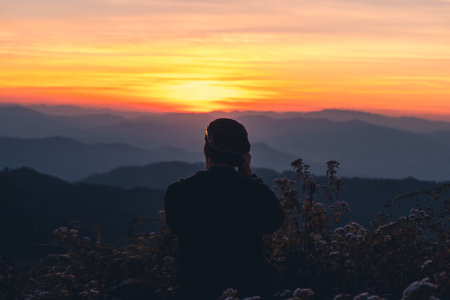1. Choosing the Right Survival Gear
When youre heading out on a survivalist camping trip, having the right gear can make all the difference. Unlike regular camping, survivalist camping focuses on self-reliance and being prepared for unexpected challenges in the wild. Lets break down the essential tools and equipment you’ll need to stay safe and comfortable.
Shelter: Your First Line of Defense
A good shelter protects you from the elements, keeps you warm, and helps you conserve energy. You don’t need to carry a bulky tent—lightweight and compact options are available that still offer strong protection.
| Shelter Type | Pros | Cons |
|---|---|---|
| Tarp with Paracord | Lightweight, versatile, easy to pack | Requires setup skills, less insulation |
| Bivy Sack | Compact, weather-resistant | Limited space, not ideal for long stays |
| Ultralight Tent | More comfort and space | Heavier than tarp or bivy sack |
Fire-Starting Tools: Staying Warm and Cooking Food
Fire is crucial—not just for warmth but also for cooking and purifying water. Always carry multiple fire-starting methods in case one fails.
- Ferro Rod: Works even when wet; lasts longer than matches or lighters.
- Waterproof Matches: Great backup option; store in sealed container.
- Lighter: Quick and easy; bring more than one for redundancy.
- Tinder: Pack cotton balls soaked in petroleum jelly or commercial fire starters.
Water Filtration: Clean Water Is Non-Negotiable
You can only survive a few days without water, so being able to filter or purify it is vital. Never assume that natural sources are safe to drink from without treatment.
| Filtration Method | Advantages | Limitations |
|---|---|---|
| Squeeze Filter (like Sawyer Mini) | Lightweight, easy to use, effective against bacteria/protozoa | Can clog if not maintained properly |
| Pump Filter | Cleans large amounts quickly, durable build | Bigger and heavier than squeeze filters |
| Water Purification Tablets | Tiny and light, great backup option | Takes time to work, chemical taste possible |
Multi-Tools: Versatility in Your Pocket
A reliable multi-tool can replace several bulky items in your pack. Look for one with essentials like a knife blade, pliers, screwdrivers, saw blade, and can opener. Brands like Leatherman or Gerber are trusted by many survivalists for their durability and smart design.
Clothing: Dress for Wilderness Success
The right clothing keeps you dry, warm, and protected from sun or insects. Avoid cotton—it holds moisture and can chill your body in cold weather. Instead, go for layers made from synthetic materials or merino wool.
- Base Layer: Moisture-wicking long sleeve shirt and thermal pants (synthetic or wool)
- Insulation Layer: Fleece jacket or puffy down/synthetic coat for warmth at night or during cold spells
- Outer Layer: Waterproof shell jacket and pants to protect against rain and wind
- Footwear: Durable hiking boots with ankle support; bring extra socks (wool preferred)
- Accessories: Hat, gloves, buff/bandana, sunglasses depending on climate conditions
Packing the right gear is your first step toward a successful survivalist camping trip. Each item should serve multiple purposes whenever possible to reduce pack weight while maximizing function. In the next section, well cover the skills youll need to use this gear effectively in the field.
2. Mastering Essential Survival Skills
When heading into the backcountry for a survivalist camping trip, having the right gear is only half the equation — the other half is knowing how to use it. Developing essential survival skills can make the difference between a challenging adventure and a dangerous situation. Here are some core skills every survivalist camper should practice before hitting the trail.
Building a Fire
Being able to start a fire in any condition is crucial for warmth, cooking, and signaling for help. Learn how to gather dry tinder, kindling, and fuel wood, even in wet environments. Practice different fire-starting methods like:
- Using waterproof matches or a ferro rod
- Building a teepee or log cabin-style fire structure
- Creating char cloth for easier ignition
Filtering and Purifying Water
Clean water isnt always readily available in the wild. Knowing how to find, filter, and purify water is key to staying hydrated and healthy. Heres a quick overview of common methods:
| Method | Pros | Cons |
|---|---|---|
| Boiling | Kills all pathogens; no chemicals needed | Requires fire and container; time-consuming |
| Portable water filter | Fast and easy; removes most bacteria and protozoa | May not remove viruses; can clog over time |
| Chemical tablets (e.g., iodine) | Lightweight and compact | Taste may be unpleasant; wait time required |
Navigating with Map and Compass
GPS devices are great—until they run out of battery or lose signal. Knowing traditional orienteering skills ensures you can always find your way. Practice:
- Reading topographic maps
- Using a compass to take bearings and triangulate your position
- Understanding natural navigation cues like sun direction and moss growth patterns
Setting Traps for Food
If youre planning an extended wilderness stay, learning basic trapping techniques can provide vital protein. Common trap types include:
- Figure-four deadfall: A simple trigger mechanism using sticks and a heavy object to trap small animals.
- Snares: Wire or cord loops designed to catch animals by the neck or leg.
- Pitfall traps: Concealed holes designed to capture larger ground-dwelling creatures.
*Always check local laws regarding trapping wildlife before practicing these methods.*
Foraging for Edible Plants
The American wilderness is full of edible plants — if you know what youre looking for. Study region-specific guides before your trip, but here are some common edible plants found across many U.S. regions:
| Plant Name | Description | Caution Notes |
|---|---|---|
| Dandelion | You can eat the leaves, flowers, and roots raw or cooked. | Bitter taste; wash thoroughly before eating. |
| Cattail | The shoots, roots, and pollen are edible when properly prepared. | Avoid polluted water sources where cattails grow. |
| Wild berries (blackberries, blueberries) | Nutrient-rich and tasty when ripe. | Avoid white or unknown berries — many are toxic. |
Pro Tip:
If youre unsure about a plants identity or safety, dont eat it. Some toxic plants closely resemble edible ones.
The more you practice these skills ahead of time, the more confident youll feel once youre deep in the wild. Survival isn’t just about tools — its about knowledge and preparation.
![]()
3. Planning Your Route and Location Wisely
When it comes to survivalist camping, choosing the right location and planning your route are just as important as packing the right gear. In fact, where you go can make or break your trip. Before you head out, its crucial to do your homework on potential camping spots and understand what to expect from the terrain, climate, and local regulations.
Researching Your Camping Area
Start by identifying areas known for backcountry or dispersed camping. U.S. National Forests and Bureau of Land Management (BLM) lands often allow primitive camping, but each location has its own rules. Use official websites like the U.S. Forest Service or BLM.gov to get accurate information.
Key Factors to Consider:
| Factor | Why It Matters | What to Check |
|---|---|---|
| Terrain | Impacts accessibility, shelter options, and navigation difficulty | Topographic maps, trail reports, satellite images |
| Climate | Affects what gear you need and how to stay safe | Seasonal weather patterns, temperature swings, rainfall |
| Natural Hazards | Protects you from wildlife dangers and environmental risks | Bears, snakes, flash floods, wildfires, avalanche zones |
| Regulations | Keeps your trip legal and reduces impact on nature | Fire bans, permits, group size limits, restricted zones |
Understanding Permits and Fire Bans
Many U.S. national forests require permits for overnight stays in certain areas—especially wilderness zones. These may be free or require a small fee. Fire bans are also common during dry seasons to prevent wildfires. Always check with the ranger district office before starting your trip.
How to Stay Updated:
- Check the U.S. Forest Service website for alerts and restrictions.
- Call local ranger stations for real-time info.
- Download offline maps with updated layers showing fire bans or closures.
Selecting a Survival-Appropriate Spot
A survivalist camping spot should offer natural resources like clean water sources (streams or lakes), edible plants (if you know how to identify them), firewood (if fires are allowed), and some form of natural shelter or cover like rock overhangs or dense trees. Avoid flood-prone areas like canyon bottoms or dry creek beds.
Location Checklist:
- Water Source Nearby: At least within walking distance but not too close (200 feet away minimum)
- Shelter Options: Natural windbreaks or tree coverage for protection against elements
- No Signs of Recent Animal Activity: Avoid dens, nests, or heavily trafficked game trails
- Sufficient Space: Flat ground for sleeping area; avoid slopes or rocky patches
Navigating Your Route Safely
If youre heading into remote backcountry, plan your route using both digital tools (like Gaia GPS or OnX Backcountry) and physical topographic maps. Mark water points, possible campsites, escape routes, and danger zones beforehand. Always share your route with someone back home and set a check-in schedule if possible.
Pro Tip:
If youre new to an area, consider starting with a shorter trip to get familiar with the environment before attempting a multi-day survival challenge.
4. Prepping Physically and Mentally
Heading out on a survivalist camping trip isn’t just about packing the right gear or knowing how to start a fire. It’s also about making sure your body and mind are ready for the challenges ahead. Survival situations can be unpredictable, so preparing yourself physically and mentally is just as important as bringing a knife or building a shelter.
Mental Toughness: Staying Calm When Things Go South
When you’re deep in the wilderness with no cell signal and limited supplies, panic can be your worst enemy. Mental toughness means keeping a level head under pressure, making smart decisions even when youre tired, cold, or scared.
Tips to Build Mental Resilience:
- Practice stress drills: Simulate tough scenarios during local hikes—like getting lost (safely) or rationing food—to see how you react.
- Visualization: Before your trip, visualize different survival situations and how you would handle them calmly.
- Breathing techniques: Learn simple breathing exercises to calm your nerves during high-stress moments.
Situational Awareness: Know What’s Around You
Staying aware of your surroundings helps you spot threats before they become problems—whether it’s a sudden change in weather, signs of wildlife, or noticing youre off course. This skill can help you avoid danger altogether.
Ways to Improve Situational Awareness:
- Play “what if” games: During practice hikes, regularly ask yourself, “What would I do if X happened right now?”
- No distractions: Keep phones and earbuds away while hiking; stay focused on sounds and sights around you.
- Track landmarks: Train yourself to remember natural markers like large rocks, tree formations, or streams.
Physical Conditioning: Train Like You Mean It
You don’t need to be a Navy SEAL, but being in shape will make your survivalist trip safer and more enjoyable. Carrying a heavy pack over rough terrain takes strength and endurance—and being fit also lowers your risk of injury.
Simple Training Methods for Survival Camping:
| Training Method | Description | How Often |
|---|---|---|
| Packed Hikes | Go on local hikes with your full pack to simulate real trail conditions. | 1–2 times/week |
| Cold Exposure Training | Safely expose yourself to cold (like cold showers) to train body tolerance. | A few times/week (start slow) |
| Bodyweight Exercises | Focus on squats, push-ups, planks for core strength and mobility. | 3–5 times/week |
| Circuit Training | Create obstacle-style workouts that mimic real-world movements like lifting logs or crawling under branches. | 1 time/week for variety |
Packing Out With Weight: Train Like You Camp
If youre going to carry 40 pounds through the backcountry, practice by doing it ahead of time. Start with shorter walks carrying weight in your backpack and gradually increase distance and load. This not only builds strength—it helps break in your gear too.
Your Mindset Is Your Most Important Tool
No matter how much gear you have or how many knots you know, your mindset will ultimately determine how well you handle tough situations. Stay adaptable, stay positive, and always expect the unexpected. A strong mind paired with a conditioned body puts you way ahead when things don’t go according to plan out there.
5. Emergency Protocols and Communication
When youre out on a survivalist camping trip, being prepared for the worst-case scenarios is just as important as packing your gear. Knowing how to respond when things go wrong can be the difference between a minor hiccup and a life-threatening situation. Below are key emergency protocols and communication strategies every camper should know.
Responding to Injuries
Accidents happen, even to experienced campers. Whether its a deep cut, sprain, or more serious injury, you need to act fast and smart.
Basic Steps:
- Stop the bleeding: Apply pressure using a clean cloth or bandage.
- Clean the wound: Use purified water and antiseptic wipes if available.
- Immobilize the area: For sprains or fractures, use a splint made from sticks and bandages.
- Pain management: Have over-the-counter pain relievers like ibuprofen in your first-aid kit.
If You Get Lost
Losing your way in the wilderness can be terrifying. The key is to stay calm and follow these steps:
- Stop moving: Take a moment to gather your thoughts and avoid wandering further off track.
- Use landmarks: Try to remember any visible features you passed—rivers, rock formations, etc.
- Use navigation tools: Pull out your map, compass, or GPS device if available.
- Signal for help: Use a whistle (three short blasts), signal mirror, or brightly colored clothing.
Dealing with Wildlife Encounters
You’re in their territory, so it’s important to understand how to react if you come face-to-face with wild animals.
| Animal | What To Do |
|---|---|
| Bear | Avoid eye contact, speak calmly, back away slowly. Don’t run. Use bear spray if it approaches. |
| Snake | Back away slowly. If bitten, remain calm and keep the affected limb below heart level. Seek medical help ASAP. |
| Coyote/Wolf | Make yourself look larger, make noise, don’t turn your back. Slowly retreat while facing them. |
| Mountain Lion | Stand tall, make loud noises, never run. Throw rocks or sticks if it approaches aggressively. |
Coping with Extreme Weather
The weather can change rapidly in remote areas. Be ready for anything from sudden storms to unexpected cold snaps.
Weather Preparedness Tips:
- Check forecasts before leaving: Use reliable apps or NOAA updates.
- Shelter setup skills: Know how to create windbreaks and waterproof coverings using tarps or natural materials.
- Dress in layers: Use moisture-wicking base layers and insulating outerwear.
- Avoid open areas during lightning storms: Stay low and away from tall trees or metal objects.
The Importance of Communication Tools
Your smartphone might not work in remote backcountry areas. That’s why having dedicated communication devices is essential for safety during survivalist camping trips.
| Device | Description |
|---|---|
| GPS Beacon (PLB) | Sends a distress signal with your location to emergency responders via satellite; no subscription needed but only for emergencies. |
| Satellite Phone | Makes calls or sends texts anywhere theres satellite coverage; great for two-way communication in remote zones. |
| Two-Way Radio (FRS/GMRS) | Useful for short-range communication between team members; limited by terrain but helpful within campsites or trails. |
| Whistle & Signal Mirror | No batteries needed; good backup for drawing attention if electronics fail or batteries die. |
Create a Communication Plan:
- Select check-in times: Let someone know when youll report in daily via device if possible.
- Share your route map: Leave copies with family or friends before departure including estimated return time and GPS coordinates if possible.
No matter how well-prepared you are, nature can throw surprises your way. Having solid emergency protocols and reliable communication tools ensures youre ready to handle whatever comes your way—and get home safely.


